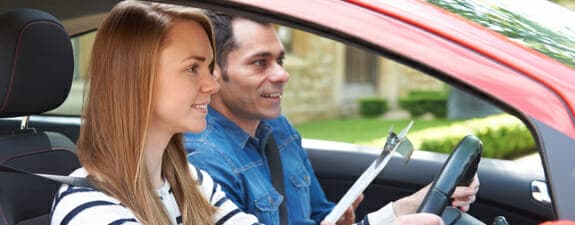
Can You Park on a Hill?
Definition of Parking on a Hill
Parking on a hill refers to when a vehicle is parked on a sloped surface, such as a hill or incline. This can be done either facing up or down the hill.
Is it Legal to Park on a Hill in the UK?
In the UK, it is not legal to park on a hill, however, there are certain considerations that must be taken into account.
Considerations for Parking on a Hill
When parking on a hill, it is important to take the following steps to ensure the safety of yourself and other road users:
- Park close to the kerb and apply the handbrake firmly: This helps to prevent the vehicle from rolling away while parked on the hill.
- Select a forward gear and turn your steering wheel away from the kerb when facing uphill: This ensures that if the handbrake fails, the vehicle will roll back into the kerb rather than into oncoming traffic.
- Select reverse gear and turn your steering wheel towards the kerb when facing downhill: This ensures that if the handbrake fails, the vehicle will roll forward into the kerb rather than into oncoming traffic.
- Use ‘park’ if your car has an automatic gearbox: This is the equivalent of applying the handbrake in a manual car and helps to secure the vehicle in place.
It is also important to ensure that your vehicle is not obstructing the flow of traffic or creating a hazard for pedestrians. Additionally, parking on a road at night facing against the direction of the traffic flow is illegal, unless in a recognised parking space. If it is unavoidable, the parking lights or sidelights should be left on.
In summary, it is not legal to park on a hill in the UK, but it is crucial to follow the considerations mentioned above to ensure the safety of yourself, your vehicle, and other road users.
What Does the Highway Code Say about Parking on a Hill?
Rules and Regulations for Parking on a Hill
According to the Highway Code, there are specific rules and regulations that must be followed when parking on a hill. These rules are in place to ensure the safety of other road users and pedestrians. The specific rules and regulations for parking on a hill are as follows:
- Park close to the kerb: When parking on a hill, it is important to park as close to the side of the road as possible. This helps to minimise obstruction to other vehicles and allows for smooth traffic flow.
- Face in the same direction as traffic: The vehicle must be parked facing in the same direction as the flow of traffic. This ensures that the vehicle is aligned with the normal flow of vehicles on the road.
- Turn wheels to the kerb: If there is a kerb present, the wheels of the vehicle should be turned to the right towards the road when parking facing uphill. On the other hand, if there is no kerb, the wheels should be turned to the left. This is done to prevent the vehicle from rolling downhill in case the handbrake fails.
- Engage the handbrake and leave the transmission in gear: When parking on a hill, it is important to engage the handbrake firmly to prevent the vehicle from rolling. If the vehicle has a manual transmission, it should be left in first gear when facing uphill and in reverse gear when facing downhill. If the vehicle has an automatic transmission, it should be left in park.
- Switch off headlights: The vehicle must have its headlights switched off when parked on a hill. This is to avoid draining the battery and to prevent dazzling other road users.
Restrictions and Limitations for Parking on a Hill
While there are no specific restrictions or limitations for parking on a hill according to the Highway Code, there are some general guidelines that should be followed to ensure safe parking. These include:
- Avoid obstructing the view of other road users: The vehicle should not be parked on a bend or a hill where it could obstruct the view of other road users. This is important for maintaining clear visibility and preventing accidents.
- Do not park in restricted areas: The vehicle should not be parked on a double yellow line or in any other restricted area. This is to ensure that the vehicle does not cause obstruction or inconvenience to other road users.
- Exercise caution in adverse weather conditions: It is especially dangerous to park on the road in fog. If it is unavoidable, it is recommended to leave the parking lights or sidelights on to increase visibility.
Penalties for Not Following the Rules for Parking on a Hill
The penalties for not following the rules for parking on a hill vary depending on the location. In London, parking on the pavement is illegal and can result in a fine of £130 or £110, depending on the road. Elsewhere, you may not be fined unless it is deemed that you have parked in a dangerous position.
It is important to note that failure to comply with the rules in the Highway Code may be used as evidence in court proceedings under the Traffic Acts to establish liability. This means that not following the rules for parking on a hill can have legal consequences and may result in fines or other penalties.
How to Park on a Hill Safely
Steps to Properly Park on a Hill
- Select a safe parking spot: Look for a spot that is away from traffic and has a flat surface. It is important to choose a location that provides enough space for your car and is not too close to the edge of the hill.
- Apply the parking brake: Before you begin to park, make sure the parking brake is engaged. This will help to prevent your car from rolling away while parked on the hill.
- Position the wheels: When parking on a hill, it is crucial to position the wheels correctly to ensure that your car does not roll away. If you are parking facing downhill, turn the wheels away from the kerb. This means that if the brakes become disengaged, the car will roll onto the verge instead of rolling into the road. On the other hand, if you are parking facing uphill with a kerb, turn the wheels towards the road. This way, if the parking brakes fail and the car rolls backwards, the front tyre will hit the kerb and stop the vehicle from rolling further. If you are parking facing uphill without a kerb, turn the wheels to the left.
- Shift into park: Once the wheels are in the correct position, shift the vehicle into park (automatic transmission). This will ensure that the car is securely locked in place.
- Turn off the engine: After the vehicle is in park, turn off the engine and remove the key from the ignition. This is an important safety measure to prevent any accidental movement of the car.
Additional Safety Measures
When parking on a hill, it is important to take extra safety measures to ensure that the vehicle is parked securely and safely. Here are some additional safety measures to consider:
- Find a level spot: Look for a parking spot that is level and wide enough for your car. Avoid parking too close to the edge of the hill, as this can increase the risk of your car rolling.
- Engage the parking brake: Always apply the parking brake before you begin to park. This will provide an additional layer of security and prevent your car from rolling away.
- Check for traffic: Before exiting your vehicle, check for any oncoming traffic. Make sure it is safe to open your car door and step out onto the road.
- Use caution when exiting: When exiting your vehicle, be mindful of the slope of the hill. Open your car door slowly and be prepared for any unexpected movement of the car.
By following these steps and safety measures, you can park on a hill safely and minimise the risk of accidents or damage to your vehicle.
Common Mistakes to Avoid When Parking on a Hill
The most common mistakes learners make when parking on a hill are not turning the wheels in the correct direction, not leaving the car in the correct gear, and not applying the parking brake correctly. These mistakes can be avoided by following the correct procedures and taking the necessary precautions.
To avoid the mistake of not turning the wheels in the correct direction, learners should know the proper wheel positioning when parking on a hill. When parking facing downhill, the front wheels should be turned towards the kerb (if there is one) and the car should be put into reverse gear. This will prevent the vehicle from rolling into traffic if the parking brake fails. When parking facing uphill, the wheels should be turned to the right (towards the road) if parked on the left, or to the left if there is no kerb. This will prevent the vehicle from rolling into traffic if the parking brake fails.
Another common mistake is not leaving the car in the correct gear. If driving a manual vehicle, learners should leave the car in first gear when parking uphill or reverse gear for downhill. This will keep the engine engaged and prevent the vehicle from rolling. If driving an automatic vehicle, learners should leave it in ‘park’. By selecting the appropriate gear, learners can ensure that the vehicle remains stationary and does not roll.
Not applying the parking brake correctly is also a common mistake. Learners should always make sure the parking brake is applied correctly. This means engaging the handbrake fully and ensuring that it is secure. By properly applying the parking brake, learners can prevent the vehicle from rolling and causing accidents.
The potential consequences of making these mistakes can be severe. If the car rolls into traffic due to not turning the wheels in the correct direction, it can cause a serious accident, resulting in injury or even death. If the car is not left in the correct gear, it can roll and cause accidents as well. Additionally, if the parking brake is not applied correctly, the vehicle can roll and pose a danger to other vehicles and pedestrians. Therefore, it is crucial to avoid these mistakes to ensure the safety of oneself and others on the road.
Tips for Parking on a Hill at Night
Are there any specific rules or regulations for parking on a hill at night?
In the UK, there are no specific rules or regulations for parking on a hill at night. However, drivers should be aware of the general rules of the road and take extra care when parking on a hill.
Are there any additional precautions to take when parking on a hill in low visibility conditions?
When parking on a hill in low visibility conditions, such as fog or heavy rain, it is important to take additional precautions to ensure your safety. Here are some additional precautions to consider:
- Well-Lit Area: Park your vehicle in a well-lit area to improve visibility. This will make it easier for other drivers to see your vehicle and reduce the risk of accidents.
- Lights On: Keep your vehicle’s lights switched on, even if you are parked. This will make your vehicle more visible to other drivers and help prevent any potential collisions.
- Handbrake On: Ensure that the handbrake is applied firmly to prevent your vehicle from rolling. This is especially important in low visibility conditions, as other drivers may have difficulty seeing your vehicle and reacting in time to avoid a collision.
By following these safety considerations and taking additional precautions in low visibility conditions, you can help ensure the safety of yourself and other road users when parking on a hill at night.
Benefits of Learning to Park on a Hill
Learning to park on a hill can provide several advantages for drivers. Firstly, it helps to reduce the risk of accidents by preventing the car from rolling away into oncoming traffic. By knowing how to position the wheels and which gear to park in, drivers can ensure that their vehicle remains secure on the hill.
Mastering hill parking also contributes to overall driving skills. It requires drivers to have a good understanding of the Highway Code and the ability to make quick decisions in potentially hazardous situations. This improves their overall confidence and ability to navigate the road safely. Additionally, it helps drivers develop better control over their vehicles, as they need to be able to accurately judge distances, angles, and speeds in order to park safely on a hill.
There are specific scenarios where knowing how to park on a hill is particularly beneficial. For example, in hilly areas, drivers need to be able to park safely and securely on slopes. This skill is also useful in busy areas where quick and efficient parking is necessary. Furthermore, when driving in countries like the USA or across Europe, drivers need to be aware of the different wheel positioning required when parking on a hill without a kerb.
In summary, learning to park on a hill provides advantages such as reducing the risk of accidents, improving overall driving skills, and being beneficial in specific scenarios. It helps drivers develop better control, judgement, and confidence, ultimately contributing to their ability to navigate the road safely.
Contact Smart Drive UK for Expert Guidance and Support
For UK learner drivers seeking expert guidance and support in mastering hill parking, Smart Drive UK is an excellent resource. Smart Drive UK offers a range of courses and services designed to help learners become confident and safe drivers. Their experienced instructors can provide the necessary guidance and practice to ensure learners develop the skills needed for hill parking and overall road safety.
In conclusion, mastering hill parking is an essential skill for UK learner drivers. It is crucial to understand the rules, regulations, and safety precautions associated with hill parking. By following the guidelines provided in this blog post and seeking expert guidance from Smart Drive UK, learners can become confident and safe drivers, ensuring their own safety and the safety of others on the road.



